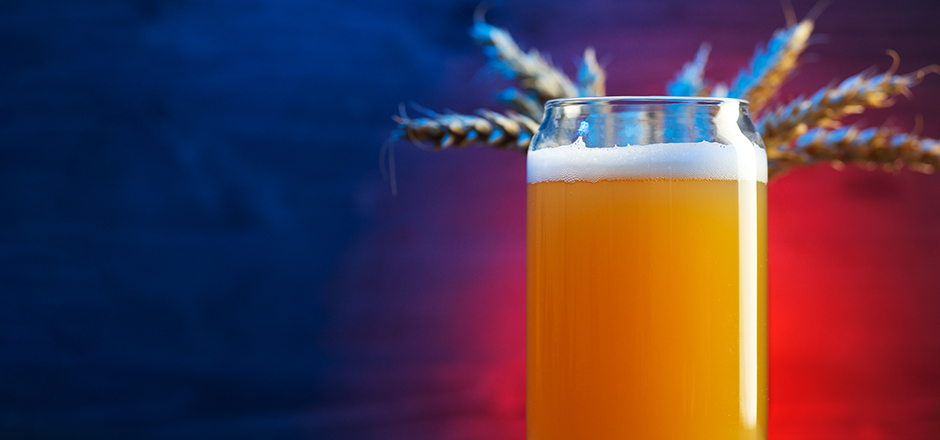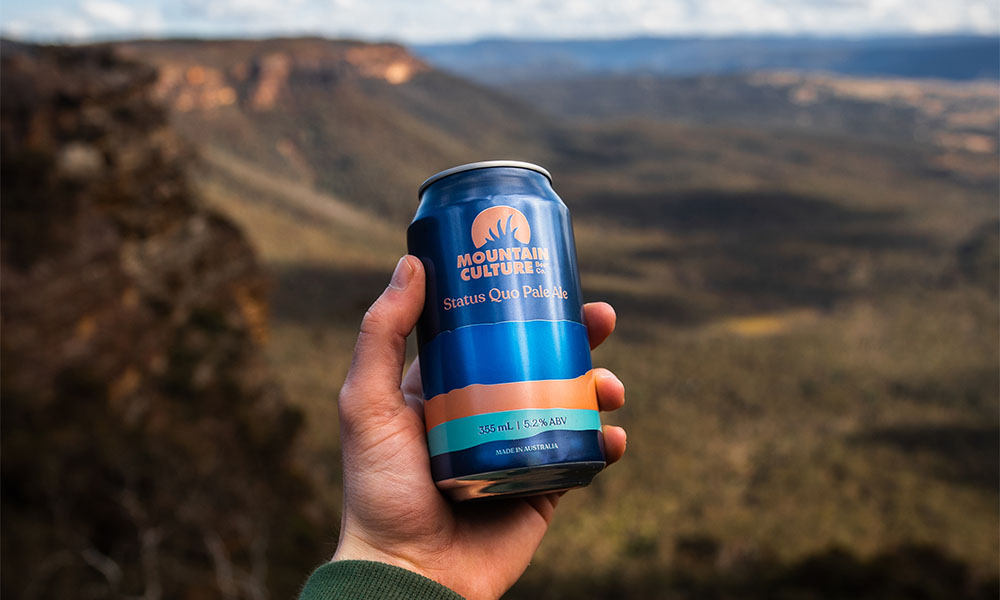- The Brew
This is the beer you will drink all summer
Read Time 3 Minutes
Posted 31 Aug 2022
By Vintage Cellars
Hazy IPAs are here and taking over the local craft beer scene. Find out why.
Juicy, fruity and a little bit different, the hazy IPA is demanding attention everywhere from chic bars to backyard barbecues.
This cloudy beer, a refreshing variation on the traditional India Pale Ale, began to widely appear in the United States in 2011 as New England IPAs, or NEIPAs, and exploded in popularity in the middle of that decade.
By 2018 they’d leapt across the Pacific to capture the imagination of Australian drinkers. And the trend is continuing. Black Hops’ G.O.A.T. was released in 2018 and by 2020 was the Gold Coast brewer’s highest selling beer.
So what is a hazy IPA beer?
“They’re defined by their appearance,” says Black Hops’ Michael McGovern. “Imagine freshly squeezed orange juice with the beautiful white foam resting on top. That [kind of flavour and look] was out of left field after a period of brewing where clarity equalled quality.”
Hazy IPAs have a beautiful silken mouthfeel and aren’t nearly as bitter as a traditional IPA, making them super approachable. But there are other reasons for their popularity with both drinkers and brewers.


They’re Made to be Consumed (Very) Fresh
The old adage that a beer is best drunk in the shadow of the brewery has never been truer than with hazy beer. It helps explain the sudden rise of locally brewed versions.
“They’re packed full of fresh hops and lots of yeasts and protein,” McGovern says. “The best version you can get is the most local, so it wasn’t until Australian craft brewers started to get their head around how to make them that their popularity here really skyrocketed.”
They Appeal to Both Aficionados and First Timers
Craft beer lovers fell in love with hazy IPAs because of the range of expression available to brewers. You could drink the candied orange, mango and passionfruit notes of the Balter Hazy IPA, or go large on the citrus oil and piney hop character of Brick Lane’s Avalanche IPA. The options are endless.
But these are also very easy drinking brews that are full of flavour, McGovern says, making them the perfect introduction to craft brews for that mate who “doesn’t drink beer”. On that …
Hazy IPAs Helped End the Bitterness Arms Race
For a while IPAs were only going in one direction, and that was more bitter. Hazy IPAs have helped neutralise that trend – they’re more about hop flavour than hop bitterness.
Brewers tend to add a lot of high-protein malts such as wheats and oats to their brew, helping generate the beer’s body, hazy appearance and smooth mouthfeel. “We then tend to stay away from hop additions early in the boil,” McGovern says. “That’s to reduce the amount of oil isomerisation, which contributes to bitterness in beer.
“Then, during fermentation we add a significant amount of hops to help facilitate biotransformation, where the hop oils interact with active yeasts and help to exaggerate that juicy hop flavour.”
All That Flavour Makes Them a Great Sessionable Beer
You can get some blockbuster hazy IPAs – Revel’s Hazy IPA weighs in at 6.5 per cent ABV, and Ballistic Beer Co’s Hawaiian Haze Hazy IPA is an even heftier 8 per cent. But the style is arguably even better suited to lower-ABV beers.
“We’re starting to see a lot more lower alcohol versions of the style,” McGovern says, “because the beers still have an incredible amount of flavour and body.
“They’re the sub-styles that we’re gonna see more of in the next 18 months – those hazy pale ales [such as Black Hops’ super popular East Coast Haze Hazy Pale Ale] and sessionable hazies.”
- The Brew
- View More Posts The Brew







